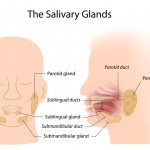
Obstructive salivary gland disease is the most common non-neoplastic disorder. It is caused by calculi, ductal stenosis, fibromucinous plugs, foreign bodies, or anatomical variations of the ductal system. The submandibular gland is most commonly involved (80-90%) with parotid involvement in 5-10% and the sublingual gland in less than one percent. The aim of this systematic review was to assess the effectiveness and safety of sialendoscopy as a diagnostic and therapeutic technique in the management of obstructive salivary disorders.
Methods
The Medline, Embase, ISI Web of Knowledge, Cochrane Library, and the NHS Centre for Reviews and Dissemination databases were searched. Fully published peer-reviewed studies with original data conducted in adult patients with obstructive disease of the major salivary glands, which provided information about the success rates of the procedure in terms of freedom from symptoms and absence of residual obstruction were considered. Papers published in English, French, Italian, Portuguese, or Spanish were included. Studies were classified according to the quality of their methods using the SIGN (Scottish Intercollegiate Guidelines Network) scale. Pooled proportion of the weighted mean of the success rates was calculated from abstracted dichotomous data of each study using inverse variance weights and pooled using a random effects model.
Results
- 49 studies involving a total 4134 sialendoscopy procedures of were included.
- 2654 were therapeutic sialendoscopies and 1480 were part of the combined surgical approach.
- The majority of procedures (n = 2646, 64%) were on the submandibular gland and only one included procedures on the sublingual glands.
- For interventional sialendoscopy alone (40 studies)
- The weighted pooled proportion of successful resolution of the obstruction was 76% (95% CI; 71 to 82%) I2 = 91.6%
- The incidence of sialadenectomy was 0% to 24.5%.
- Few complications were reported and included sialadenitis, persistent swelling, stricture, temporary paraesthesia, perforation of the ductal wall, ligation of the duct, blockages of the wire basket, postoperative infection and bleeding, traumatic ranulas, and problems with equipment.
- Combined surgical approach (23 studies)
- The weighted pooled proportion of successful resolution of the obstruction was 91% (95% CI; 88 to 94%) I2 = 67.4%
- The incidence of sialadenectomy was 0% to 33.3%.
Conclusions
The authors concluded: –
In summary, sialendoscopy is effective and safe for the diagnosis and treatment of patients with obstructive disease of the salivary glands.
Comments
The authors have sought to update an earlier systematic review of this topic published by Strychowsky et al in 2012 (Dental Elf- 29th Oct 201). They have conducted a broad database search but it is not clear whether the study selection and data abstraction have been conducted independently. While the SIGN criteria have been used to assess study quality no information on this is included in the main paper so it is difficult for the reader to assess the quality of the included studies. As all the included studies were observational in may have been possible to use the Newcastle-Ottawa scale.
The earlier review included 29 studies compared with the 49 in the updated review while a number of the studies have been published since 2012 a number earlier studies not included in the Strychowsky review. The Strychowsky review found a weighted pooled proportion success rate of 86% (95% CI; 83-89%) for sialendoscopy alone compared with 76% (95% CI; 71 to 82%) and 93% (95% CI; 89-96%) for sialendoscopy and surgery compared with 91% (95% CI; 88 to 94%) in this new review. While the success rates reported in both reviews are good, the overall quality of the evidence supporting the data is low and should be taken into account. In the discussion the authors highlight some potential technical reasons for low rates of technical success although in his accompanying commentary on the review McGurk notes some new technical developments that will advance clinical practice.
Links
Atienza G, López-Cedrún JL. Management of obstructive salivary disorders by sialendoscopy: a systematic review. Br J Oral Maxillofac Surg. 2015 Jul;53(6):507-519. doi: 10.1016/j.bjoms.2015.02.024. Epub 2015 Mar 29. Review. PubMed PMID: 25823614.
McGurk M. Commentary on: Management of obstructive salivary disorders by sialendoscopy: a systematic review. Br J Oral Maxillofac Surg. 2015 Jul;53(6):520-1. doi: 10.1016/j.bjoms.2015.02.025. Epub 2015 Apr 20. PubMed PMID: 25906904.

Sialendoscopy for obstructive salivary disease. http://t.co/N2gp013JIu
76% of obstructive salivary disease resolved with sialendoscopy alone suggests review.http://t.co/N2gp013JIu
Sialendoscopy & surgery resolved 91% of obstructive salivary disease. http://t.co/N2gp00M8jU
Good resolution of obstructive salivary disease with sialendoscopy. http://t.co/N2gp013JIu
Don’t miss- Sialendoscopy for treating obstructive salivary disorders. http://t.co/N2gp013JIu